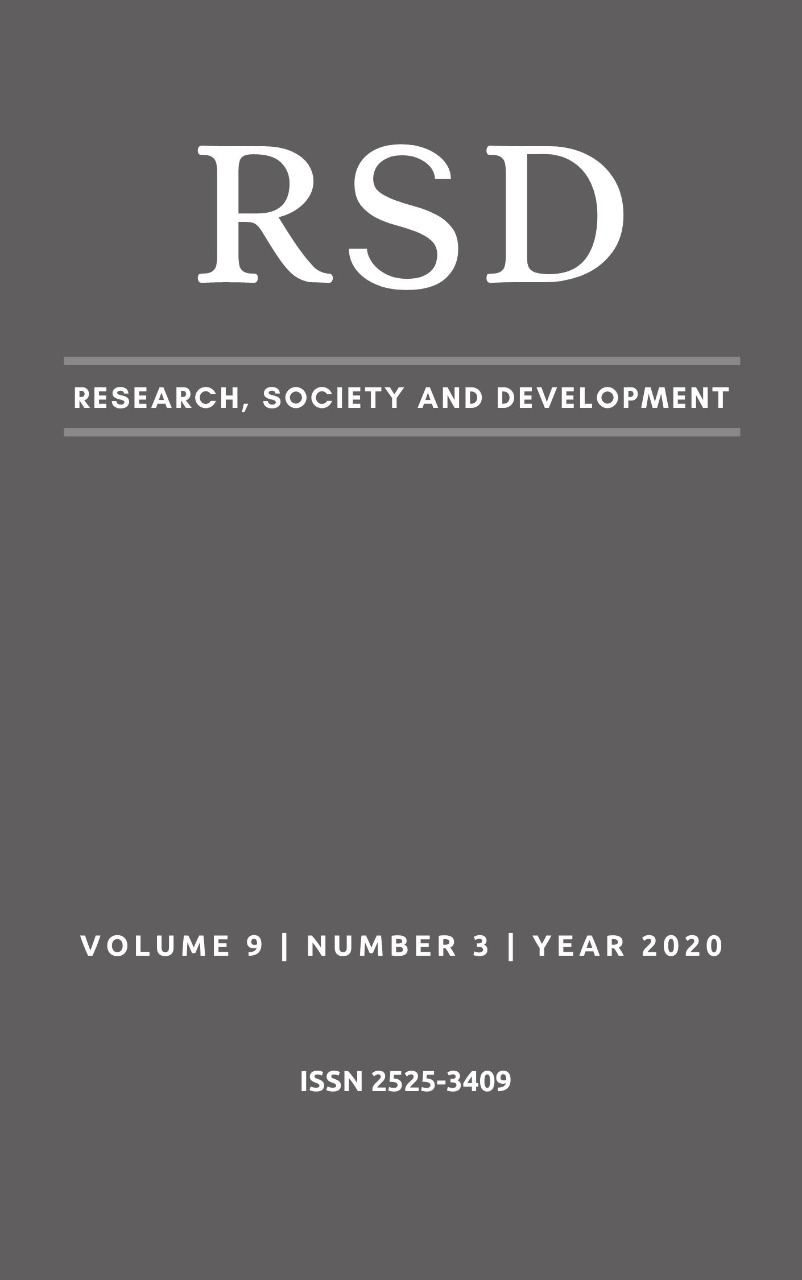La numismática en la antigüedad como elemento en desarrollo de la conciencia histórica
DOI:
https://doi.org/10.33448/rsd-v9i3.2311Palabras clave:
Monedas, Fenomenología, Antigüedad romana.Resumen
Al estudiar las teorías del desarrollo de la conciencia histórica, encontramos que dicho concepto es observable a lo largo de la historia de la humanidad, y no simplemente el fruto del pensamiento moderno. La conciencia histórica es la capacidad del individuo de verse a sí mismo como un agente de la historia, influenciado por él y su influenciador, consciente de los procesos históricos, es decir, que los elementos del pasado influyen en la complejidad actual de nuestra sociedad. A partir de los conceptos de Conciencia Histórica, el trabajo tuvo como objetivo analizar no solo su desarrollo entre los pueblos de la antigüedad, especialmente de la Antigua Roma, sino también en el desarrollo de esta conciencia hoy. La metodología utilizada fue un análisis basado en los trabajos de Hans-Georg Gadamer (1900-2002), Philippe Ariès (1914-1984), Jörn Rüsen (1938-) y Agnes Heller (1929-2019). Observamos cómo la numismática contribuyó al desarrollo de tal conciencia en la antigüedad y, además, su estudio ayuda a la disciplina de la historia a alcanzar los objetivos establecidos por las políticas de educación pública, formando jóvenes conscientes con sentido crítico y capacidad analítica.
Referencias
Alves, L. C. R. (2013). A Consciência Na Fenomenologia Husserliana. Theoria – Revista Eletrônica De Filosofia (Pouso Alegre), V. V, P. 112-124.
Alves, S. I.; Alegro, R. C. (2008). Desenvolvimento Moral E Consciência Histórica: Uma Leitura Sobre A (In) Disciplina Escolar. In: Iii Congresso Ibero-Americano Sobre Violências Nas Escolas - Ciave; Viii Congresso Nacional De Educação - Educere, 2008, Curitiba. Anais Do Iii Congresso Ibero-Americano Sobre Violências Nas Escolas; Anais Do Viii Congresso Nacional De Educação - Educere. Curitiba: Champagnat, P. 01-13.
Brasil. Ministério Da Educação (1998). Secretaria De Educação Fundamental. Parâmetros Curriculares Nacionais: História / Secretaria De Educação Fundamental. Brasília: Mec / Sef.
Brasil. Ministério Da Educação (2000). Parâmetros Curriculares Nacionais: Ensino Médio. Brasília: Mec/Sef.
Bloch, R. (1966). As Origens De Roma. Lisboa, Editorial Verbo.
Carlan, C. U. (2004). História/Documento: Numismática, Arqueologia E Cultura Material. In: V Encontro Nacional – Perspectivas Do Ensino De História, Uerj. Rio De Janeiro.
Carlan, C. U. (2009). Para Uma Renovação Teórico-Metodológica Da História: Antigas Propostas Para Uma Nova História. História Ciência Saúde-Manguinhos, Rio De Janeiro, V.16, N.3, P.823-826, Set.
Carlan, C. U. (2010). Arqueologia E Numismática: A História Antiga E A Cultura Material. Agenda Social (Uenf), V. 4, P. 22-36.
Carlan, C. U.; Funari, P. P. A. (2012). Moedas: A Numismática E O Estudo Da História. 1ª Ed. São Paulo, Annablume (Coleção História E Arqueologia Em Movimento).
Cerri, L. F. (2007). Os Conceitos De Consciência Histórica E Os Desafios Da Didática Da História. Revista De História Regional, V. 6, N. 2.
Green, P. (2014). Alexandre, O Grande, E O Período Helenístico. Rio De Janeiro: Objetiva.
Grimal, P. (2003). As Cidades Romanas. Lisboa, Edições 70.
Grimal, P. (2011). História De Roma. São Paulo, Editora Unesp.
Heller, A. (1993). Uma Teoria Da História. Rio De Janeiro: Civilização Brasileira.
Hobsbawm, E. (1998). Sobre História. São Paulo, Companhia Das Letras.
Iglesias, E. M. (2016). La Diplomacia Romana Durante La Monarquía (753 Ac-509 Ac). Káñina, V. 40, N. 1, P. 183-194.
Liberati, A. M.; Bourbon, F. (2005). A Roma Antiga. Barcelona, Folio.
Marques, A. J.; Senra, A. V. D.; Vaicberg, L. (2017). Breve Discussão Sobre A Fenomenologia Em Kant E Husserl. Gnarus. Rio De Janeiro.
Rüsen, J. (2001). Teoria Da História: Razão Histórica: Os Fundamentos Da Ciência Histórica/ Trad. Estevão De Rezende Martins. Ed. Unb, 2001.
Rüsen, J. (2010). O Desenvolvimento Da Competência Narrativa Na Aprendizagem Histórica: Uma Hipótese Ontogenética Relativa À Consciência Moral. In: Jörn Rüsen E O Ensino De História. Curitiba: Ufpr, 51-77.
Sant'anna, H. M. (2015). História Da República Romana. 1 Ed. Petrópolis: Editora Vozes.
Schmidt, M. A. M. Dos S.; Garcia, T. B. (2005). A Formação Da Consciência Histórica De Alunos E Professores E O Cotidiano Em Aulas De História. Cadernos Do Cedes (Unicamp), Campinas-Sp, V. 25, N.67, P. 297-308.
Scopacasa, R. (2015). Repensando A Romanização: A Expansão Romana Na Itália A Partir Das Fontes Historiográficas. Revista De História, N. 172, P. 113-161.
Souza, R. J.; Pires, J. R. F. (2010). Os Desafios Do Ensino De História No Brasil. Revista Do Sed E Sec Professores Em Formação. Divinópolis.
Suarez, R. (2005). Eric, The Encyclopedia Of Roman Imperial Coins. 1 Ed. Dirty Old Books.
Descargas
Publicado
Número
Sección
Licencia
Los autores que publican en esta revista concuerdan con los siguientes términos:
1) Los autores mantienen los derechos de autor y conceden a la revista el derecho de primera publicación, con el trabajo simultáneamente licenciado bajo la Licencia Creative Commons Attribution que permite el compartir el trabajo con reconocimiento de la autoría y publicación inicial en esta revista.
2) Los autores tienen autorización para asumir contratos adicionales por separado, para distribución no exclusiva de la versión del trabajo publicada en esta revista (por ejemplo, publicar en repositorio institucional o como capítulo de libro), con reconocimiento de autoría y publicación inicial en esta revista.
3) Los autores tienen permiso y son estimulados a publicar y distribuir su trabajo en línea (por ejemplo, en repositorios institucionales o en su página personal) a cualquier punto antes o durante el proceso editorial, ya que esto puede generar cambios productivos, así como aumentar el impacto y la cita del trabajo publicado.


